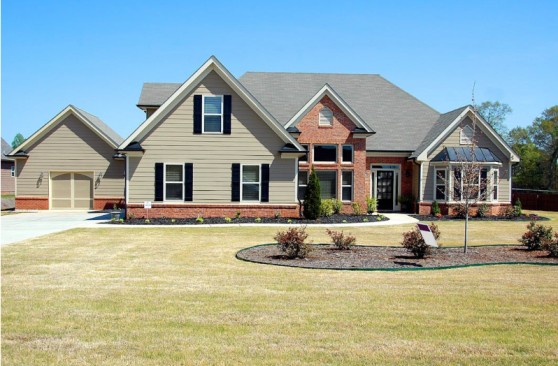Planning your future home takes more than just picking a layout or browsing decor ideas. You need a practical approach to timing, borrowing options, and the kind of house that fits your daily routine. Beyond the creative side, there are economic trends and lender conditions that affect how and when you move forward. Before you start designing or scouting neighborhoods, it’s worth understanding how broader market shifts can influence what you build and how much you can stretch.
Here are some key areas that will help you prepare, plan, and build wisely so that you can avoid avoidable stress:
Define Your Needs and Must-Haves Early
Start with clarity. List out what your home absolutely must include, what would be nice to have, and what you can do without. Break this down by room, functionality, and your day-to-day routine. For example, if you work remotely, a quiet workspace should be a priority. If you host often, think about open kitchen-dining designs. Avoid the urge to follow trends without thinking about daily use. Consider future needs, too, such as an extra bedroom or storage options. Prioritizing early helps you cut back on revisions later. It also allows your contractor to focus on realistic ideas. Once you have a clear outline, decisions throughout the project become much easier.
Understand How Financing Options Affect Your Timing
Before diving into floor plans or location scouting, look into borrowing plans that match your timeline. Lenders offer both fixed and adjustable loans, and the rates tied to these vary depending on market activity. Online tools on online platforms can help you compare loan types, estimate monthly installments, and explore terms that work for your situation. You can plug in numbers based on location, property type, and loan period. These calculators on online platforms give insight into how even small changes in today’s interest rates can affect what you’re able to afford now versus later. This helps you choose the right time to build without stretching your resources.
Find a Builder Who Gets Your Vision
Your home isn’t just a set of measurements. It’s a reflection of your lifestyle. That’s why finding a builder who respects your ideas and communicates well is essential. Start by reviewing portfolios, asking for recent client references, and checking for licenses and insurance. Don’t shy away from requesting detailed timelines, material lists, or clarification on what’s included in the cost. A good builder will be transparent and answer clearly. Also, ask about who manages subcontractors and how changes during construction are handled. Stay away from those who push vague estimates or fail to outline responsibilities. The right builder listens, advises with clarity, and stays in sync with your decisions.
Plan for Hidden and Ongoing Costs
Most people focus on the headline number of their bill, but additional charges often catch them off guard. Think about permit applications, utility hookups, inspections, and interior finishing, and not just walls and flooring. After moving in, you’ll face energy bills, cleaning services, repairs, and seasonal maintenance. These add up fast, especially if you didn’t plan for them. A smart approach is to create a separate fund just for unexpected costs. Setting aside even 10% of your total project amount can prevent stress later. Also, review your builder’s itemized quote to see what’s missing or marked as optional. This gives you more control from the start.
Focus on Layout, Not Just Square Footage
Many people assume that bigger means better. But a home’s flow can be more important than its size. It’s smarter to focus on usable space, not just overall dimensions. For example, an open layout with shared living-dining zones might serve you better than separate, underused rooms. Think about how people move through each area, like where the laundry room sits, how the kitchen connects to outdoor space, or whether there’s room near the entry for shoes and coats. Avoid unnecessary hallways or awkward corners that reduce practical space. When the layout supports your routine, you’ll get more use and comfort out of every square foot without adding to your budget.
Prioritize Energy Efficiency and Long-Term Value
When planning a new home, it’s important to think beyond the build. Choose systems and materials that save on utility bills and last longer. For example, well-insulated walls, dual-pane windows, and energy-efficient lighting make a noticeable difference. High-efficiency HVAC systems also lower power use and reduce future repair needs. While these options may cost a bit more at first, they often pay off within a few years. Some lenders even offer better borrowing terms for homes built to conserve resources. Before making upgrades, compare savings estimates and get input from your builder. Smart choices now can add long-term comfort and reduce strain on your future monthly budget.
Don’t Rush Design Decisions
It’s tempting to pick finishes quickly to keep the project moving. However, rushing into choices, such as countertops, cabinets, or flooring, can lead to regrets. You’ll live with these decisions every day, so they deserve time and thought. Spend a few evenings researching products and comparing samples in different lighting. Visit showrooms or browse completed homes online. Consider how each option holds up to wear and how it fits your daily routine. Avoid picking based on trends alone. Stick with finishes that work well with your style and maintenance habits. Waiting an extra week or two to finalize decisions is better than wishing you had picked something else later.
Turning your dream home into a real, livable space takes more than inspiration. It requires research, planning, and involvement in every step. By outlining your needs, understanding loan timing, and working with a builder who communicates clearly, you build with confidence. Smart layouts, energy-efficient choices, and well-reviewed contracts make a major difference in long-term comfort. Don’t rush design decisions, and always stay involved during the build. Even after the final coat of paint, one more inspection helps you move in without worry. Every detail, big or small, adds up to a place you’ll be proud to call home for years to come.

